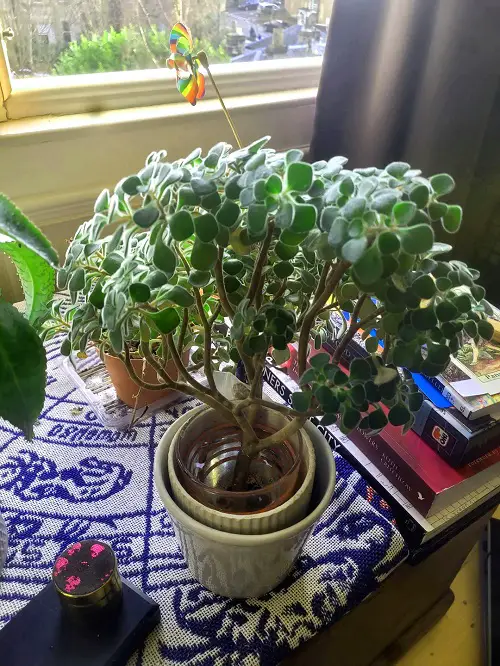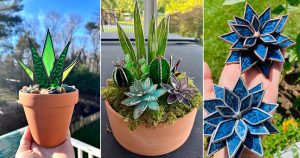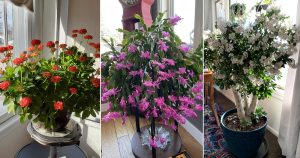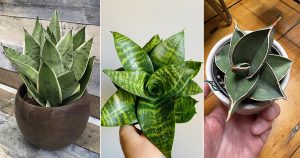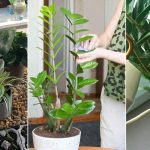Are you in love with succulents and also want a big plant for your home? This article offers choices of succulents that look like trees, fulfilling both of your desires!
Some succulents naturally look like trees, and some can be mimicked in the form of trees through regular maintenance and rigorous pruning. See the list below to add these tree-like succulents to enhance your space’s aesthetics.
Succulents That Look Like Trees
1. Jade Plant
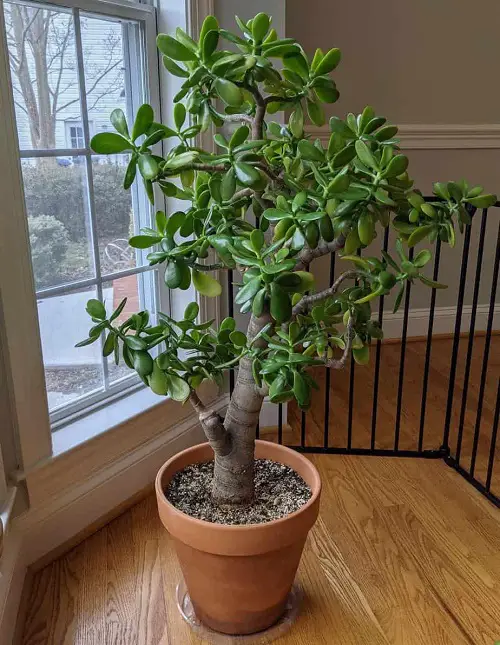
Botanical Name: Crassula ovata
The Jade Plant is a commonly grown houseplant. Its thick, woody trunk, branches, and egg-shaped leaves give it a miniature tree-like appearance. However, due to its slow-growing habit, it takes time to achieve this appearance.
If given proper care, sunlight (at least 4 hours a day), and a cool night with 55˚F temperature during fall, the plant will fill your space with small white or pink blooms with sweet fragrances that attract pollinators as well! It can grow around 6 feet tall on rocky, hilly areas, but you can successfully propagate the jade plant by mimicking the environment in your home.
2. Desert Rose
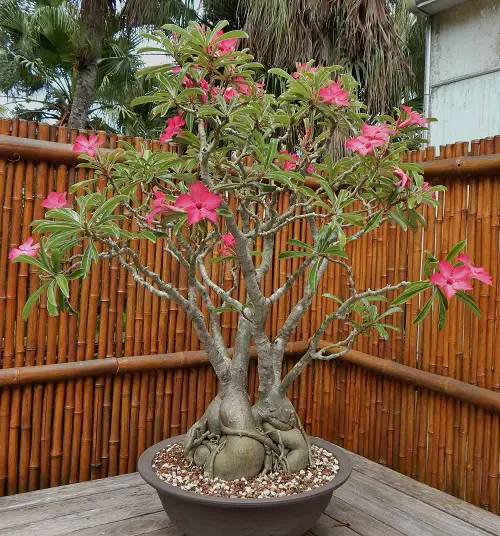
Botanical Name: Adenium obesum
Desert Rose is a perennial succulent with a thick, broad, swollen base that gives rise to twisted, woody stems densely packed with fleshy, grey-green leaves at the tips. It resembles a baobab tree in looks, not in height. Usually attains around 6-9 feet.
In the wild, it can produce bell-shaped flowers yearly, but indoors, you will typically see them in summer. It thrives in USDA Zone 11, prefers sandy, well-drained soil, and loves the sun. However, be careful with the plant’s milky sap; it’s toxic.
3. Tree of Love
Botanical Name: Aichryson laxum
This annual or biennial succulent gets its name from its heart-shaped leaves, which form rosettes on the top of divided branches. Tree of Love is a compact plant approximately 6-19 inches tall and rarely 32 inches, giving it a Mediterranean landscape miniature tree-like look.
It also has star-shaped yellow blooms, or you can call them death blooms. Yes, it is a monocarpic plant. But do not worry; you can propagate the young offshoots or leaves to maintain the plant. Just before the plant flowers, take healthy leaves or stems, let them develop calluses, and place them in the soil to root up. It needs moist soil and partial to full sun.
4. Joshua Tree
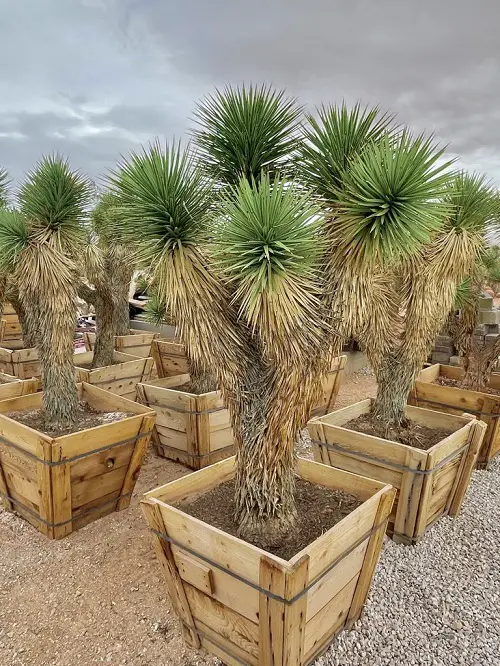
Botanical Name: Yucca brevifolia
Technically, it is not a tree—but a succulent but is honored as a tree of the desert. It is named after a biblical figure, Joshua, who lived in the 19th century and felt that the tree guided him while he traveled. The Joshua Tree grows in the Mojave Desert of the southwestern United States, around 16-14 feet long.
It features a single trunk, tall branches, and clusters of spiky foliage, which act as a deterrent to deer and rabbits. Plus, its roots have saponins, which are toxic to pets and humans, too! However, it also work as an important food source and a shelter for wildlife.
5. Madagascar Palm
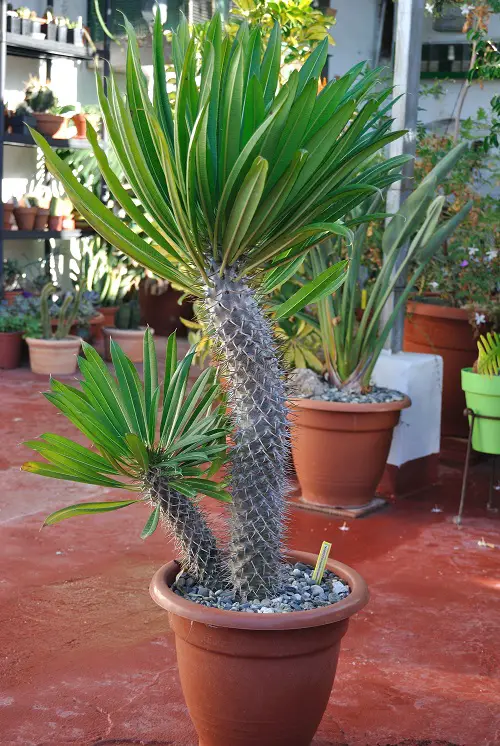
Botanical Name: Pachypodium lamerei
It is a weird succulent with a thick, spiny, cigar-shaped trunk topped with clusters of glossy green foliage. With age, the base of the plant becomes swollen, giving it a palm tree-like appearance. That is why it is popular as Madagascar Palm.
You can expect the plant to reach 5 feet and bloom upon maturity with fragrant white flowers, which take at least 10 years. It can be grown outside, even in mid-winter areas, or as a container houseplant. Full sunlight, light shade, and sandy, well-drained soil are keys to its survival.
6. Elephant Bush
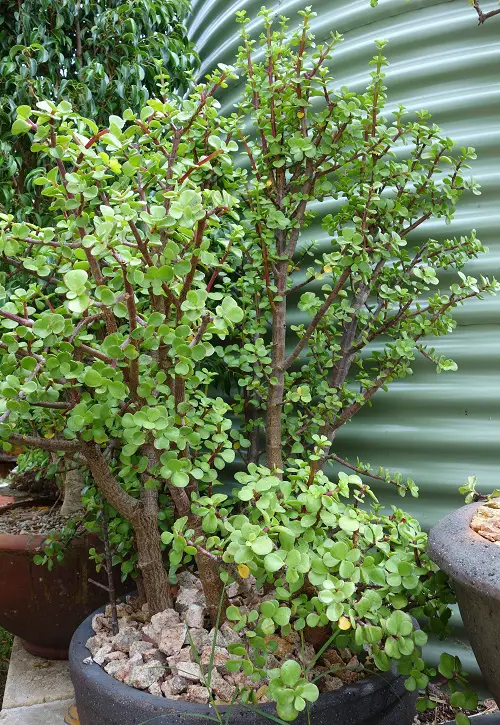
Botanical Name: Portulacaria afra
Elephant bush is the most popular houseplant, known as dwarf jade, due to its similarity in leaf structure or elephant food because elephants eat the plant in one strip. But within two weeks, the plant regrows itself with the leftover broken twigs with more thickets, which are called ‘spekboomvelds.
It is a perennial shrub-like succulent that can reach 8-16 feet in USDA zones 9-11. But you can give it a tree-like shape by rigorous pruning. Additionally, South Africans use its foliage in salads and soups to add a sour taste. And, it is helpful for treating minor ailments.
7. Quiver Tree
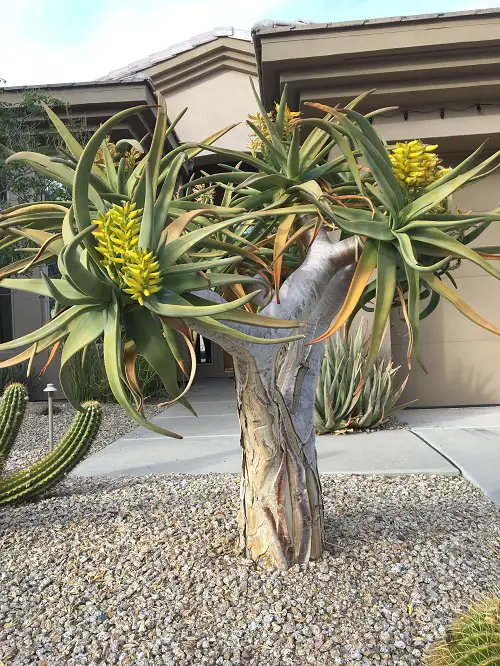
Botanical Name: Aloidendron dichotomum
Its name holds a story that says the San people used the tree’s branches to carry arrows and named this plant Quiver Tree. Found in southern Africa, particularly in central parts of Namibia, and can reach approximately 10-25 feet tall.
This succulent grows slowly with a wide, thick base, smooth bark, and gray-green leaves. It prefers dry places, usually rocky or mountainous areas.

